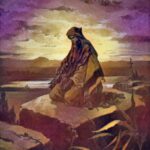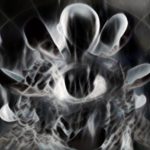Recent Comments
- Chodpa on The Place where the Primordial Speaks
- Chodpa on The Cuckoo of Presence
- Afzar on Bodhidharma’s teacher, Prajnatara
- Vajragoni on Audiobook is released
- Scott on Audiobook is released
-
Recent Posts
Categories
- A Darkness Visible
- A Docetic Assessment
- A Mystical Odyssey through the Sagathakam
- AI Creations
- Akṣayamatinirdeśasūtra
- Akṣhobhya’s Pure Land
- Ālaya-vijñāna
- Anūnatvāpūrṇatvanirdeśaparivarta
- Ariyapariyesanā Sutta
- Ascending the Noble Mountain of Primordial Perfection
- Asceticism
- Ashtavakra Gita in Light of the Unborn
- Audiobook
- Bankei Zen
- Beyond the Ascent
- Beyond the Rainbow Body
- Black Dragon Eye Mandala
- Bodhicitta
- Buddhadharma
- Buddhism’s Black Holes
- Buddhist Anecdotes
- Buddhist Hells
- Buddhist Meditations on the Tarot
- Chuang-Tzu
- Contemporary Musings
- Ḍākiṇī
- Dāsbodh
- Dharmakaya Abbey
- Dharmakaya Stick
- Divine Revelation
- Doctrine of the Void
- Dust Contemplation
- Ekacitta: Advanced Studies in Dark Zen
- Entry into the Dharmadhātu
- Eremitical Dhyani Meditations
- Exploring the Book of Revelation
- Gnostikos
- Hsin Hsin Ming
- Journey to the Center of the Mind
- Karma and Rebirth
- Korean Sŏn
- Kulayarāja Tantra—The Motherly Buddha
- Little Office of Our Lady of the Void
- LSD and Psychedelic Buddhism
- Māṇḍukya Kārikā
- Mañjuśrī Teaches Prajñāpāramitā
- Māra and Satan
- Meister Eckhart
- Mud and Water: Bassui Zen
- Mystagogia
- Nirvana
- Notes from the Iron Stupa
- Nothingness in Nāgārjuna and John of the Cross
- Obscure Religious Cults
- Preparation for the Afterlife
- Primordial Qigong
- Reflections on the Saṃdhinirmocana Sūtra
- Spirituality
- Springtime with Tozen
- Terma: A Mind Film by Vajragoni
- The Afterglow
- The Awakening of Faith
- The Bhagavad Gita
- The Book of Bodhi
- The Cloud of Unknowing in Light of the Unborn
- The Diamond Sutra
- The Divine Ātman
- The Divine Liturgy of Vajrasattva
- The Doctrine of Awakening
- The Dragon Mind of Zen Tarot
- The Elucidation of Consciousness
- The Experience of No-Self
- The Great Perfection of the Unborn Mind: A Book of Privy Counseling
- The Heart Sutra
- The Hermit's Den
- The Khaggavisāṇa Sutta: A Rhinoceros Horn
- The Lankavatara Sutra
- The Lankavatarian Book of the Dead
- The Lion's Roar of Queen Śrīmālā
- The Lotus Sutra
- The Mahāparinirvāṇasūtra
- The Naga Chronicles
- The Platform Sutra
- The Ratnagotravibhāgaśāstra
- The School of the Spirit
- The Secret Golden Light of the Unborn
- The Soul
- The Śūrańgama Sūtra
- The Sutra of Primordial Enlightenment
- The Tathāgatagarbhatārā Tantra
- The Udāna
- The Unborn Mind Mythos
- The Unborn Mind Sessions
- The Unborn Odyssey: A Novel
- The Vajrasamādhi Sutra
- The Vimalakirti Sutra
- The Yogasūtras of Patañjali
- The Zen Teaching of Bodhidharma
- The Zen Teaching of Instantaneous Awakening
- The Zen Teachings of Huang Po
- Theologia Mystica
- Tozen Teaching
- Tsung-mi: An Intimate Study
- Unborn I Ching
- Unborn Light Reiki
- Uncategorized
- Vasubandhu and the Absolute
- Wisdom from the Masters
- Wordsworth and Zen
- Yoga of the Manomayakāya
- Zen
- Zuowang
Archives
- October 2024
- August 2024
- February 2024
- January 2024
- December 2023
- November 2023
- October 2023
- September 2023
- August 2023
- July 2023
- June 2023
- May 2023
- April 2023
- March 2023
- February 2023
- January 2023
- December 2022
- November 2022
- October 2022
- September 2022
- August 2022
- May 2022
- April 2022
- March 2022
- February 2022
- January 2022
- December 2021
- November 2021
- October 2021
- September 2021
- August 2021
- May 2021
- April 2021
- March 2021
- February 2021
- January 2021
- December 2020
- November 2020
- October 2020
- September 2020
- August 2020
- May 2020
- April 2020
- March 2020
- February 2020
- January 2020
- December 2019
- November 2019
- October 2019
- September 2019
- August 2019
- June 2019
- February 2019
- January 2019
- December 2018
- October 2018
- August 2018
- April 2018
- March 2018
- February 2018
- January 2018
- December 2017
- November 2017
- October 2017
- September 2017
- August 2017
- May 2017
- April 2017
- March 2017
- February 2017
- January 2017
- December 2016
- November 2016
- October 2016
- September 2016
- August 2016
- July 2016
- May 2016
- April 2016
- March 2016
- February 2016
- January 2016
- December 2015
- November 2015
- October 2015
- September 2015
- August 2015
- July 2015
- June 2015
- May 2015
- April 2015
- March 2015
- February 2015
- January 2015
- December 2014
- November 2014
- October 2014
- September 2014
- August 2014
- May 2014
- April 2014
- March 2014
- February 2014
- January 2014
- December 2013
- November 2013
- October 2013
- September 2013
- August 2013
- May 2013
- April 2013
- March 2013
- February 2013
- January 2013
- December 2012
- November 2012
- October 2012
- September 2012
- August 2012
- May 2012
- April 2012
- March 2012
- February 2012
- January 2012
- December 2011
- November 2011
- October 2011
Meta
Tag Archives: Dharmata Buddha
Heroic Asceticism

We have discussed in these many blogs that measured asceticism is a prerequisite for mystic life, indeed it is needed to develop a singular association with the Spirit of life itself. Mircea Eliade defines asceticism in the following manner:
Posted in Spirituality, The School of the Spirit
Tagged asceticism, Benedict of Aniane, Dharmata Buddha, reason
2 Comments
Namen

- The constructing of appearances (nimitta) created by delusion is the characteristic mark of Paratantra (dependence) knowledge; the giving of names to those appearances [regarding them as real individual existences] is characteristic of the imagination.
- When the constructing of appearances and names, which come from the union of conditions and realities, no more takes place, we have the characteristic mark of perfected knowledge (parinishpanna).
This is in reference to the five-dharmas: name, appearance, discrimination, right knowledge, and suchness. False-imagination gives rise to discrimination, declaring such ideations as child, soap, etcetera, thus given a name-appellation. What follows is an appearance that is declared after the naming. In short it’s all an exercise in control—once something is named, one has the power over it. Much like during exorcisms when the priest-exorcist demands the demon give its name, after which it can be dispelled. Ultimately, though, the Lanka teaches that by “Right-Knowledge”, “when names and appearances are seen as unobtainable owing to their mutual conditioning, there is no more rising of the Vijnanas, for nothing comes to annihilation, nothing abides everlastingly.” Afterwards, what remains is quiescent-suchness. The Lanka encapsulates all this as such:
The Passage to Spiritual-Sovereignty

- In self-realisation itself there are no time [-limits]; it goes beyond all the realms belonging to the various stages; transcending the measure of thought, it establishes itself as the result [of discipline in the realm] of no-appearance.
Self-realization: another dominant term that lies at the very heart of the Lanka—indeed, as Suzuki writes, its principle-thesis. This is also the principle reason why Bodhidharma handed over his copy of the Lanka to Huike, signifying the all-importance of awakening that inner-perception, the process wherein Mind awakens to the truth of ITs inner recesses and thus comes to the realization that all that is seen is seen of the Mind Itself. Suzuki develops this further within the context of the Lanka itself:
Technique #8: Dharmasota Ho

Question: Shoden Session # 8 opens with a distinction between one’s “personal will” and the Unborn Will; curious as to why there needs to be any such distinction since we are already united with the Unborn Will as such…
Unborn Light Reiki

Originally published back in 2004, Unborn Light Reiki is a healing modality that links together the principles found within Unborn Mind Zen and Original Usui Reiki; its focus is to foster a new Reiki technique that is highlighted with the Lankavatarian principles that constitute Unborn Mind Zen. It needs to be underscored that Unborn Light Reiki is a supplementary Reiki modality and is not meant to supersede Usui’s original form; therefore anyone reading this who is experiencing Reiki for the first time needs to be aware of this and it is recommended that they pursue a foundation in traditional Reiki forms before undertaking the practice of Unborn Light Reiki. Once a foundation is realized then Unborn Light Reiki will provide a wonderful supplement to one’s Reiki practice as its principles provide a deeper realization to spiritual development by utilizing disciplined dhyana techniques that nicely blend together Usui’s original intent and the mystical impetus of the Unborn. One also quickly discerns that this singular variation of Reiki is meant for the solitary practitioner, not the hyped-new age social-media brand.
Posted in Spirituality, Unborn Light Reiki
Tagged bodhipower, Dharmata Buddha, Dhyana Interviews, Kotodamas, Mikao Usui, reiki, Ten Samadhis, Unborn Light Reiki
1 Comment

